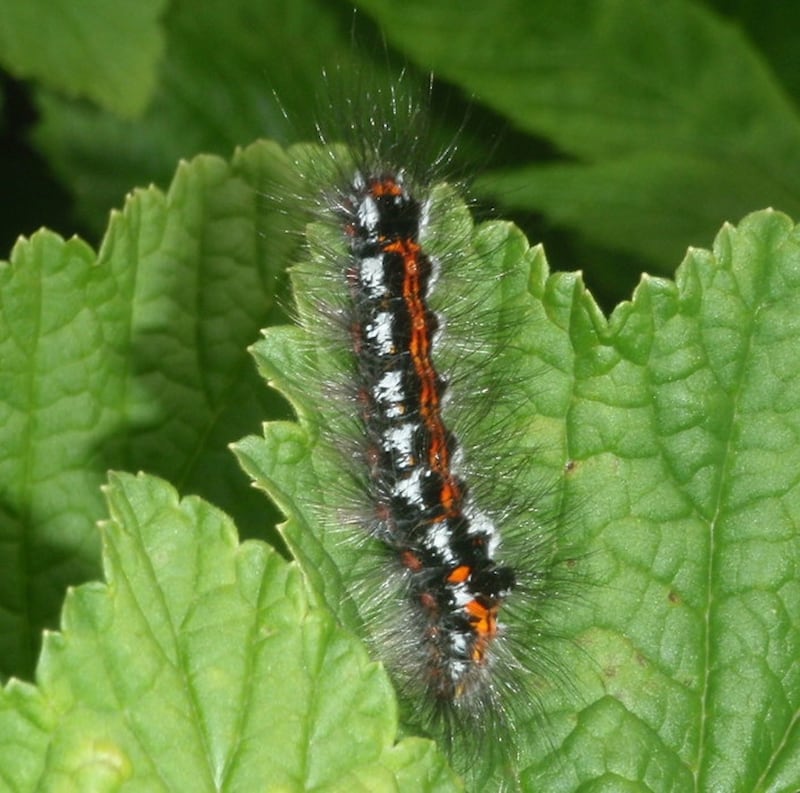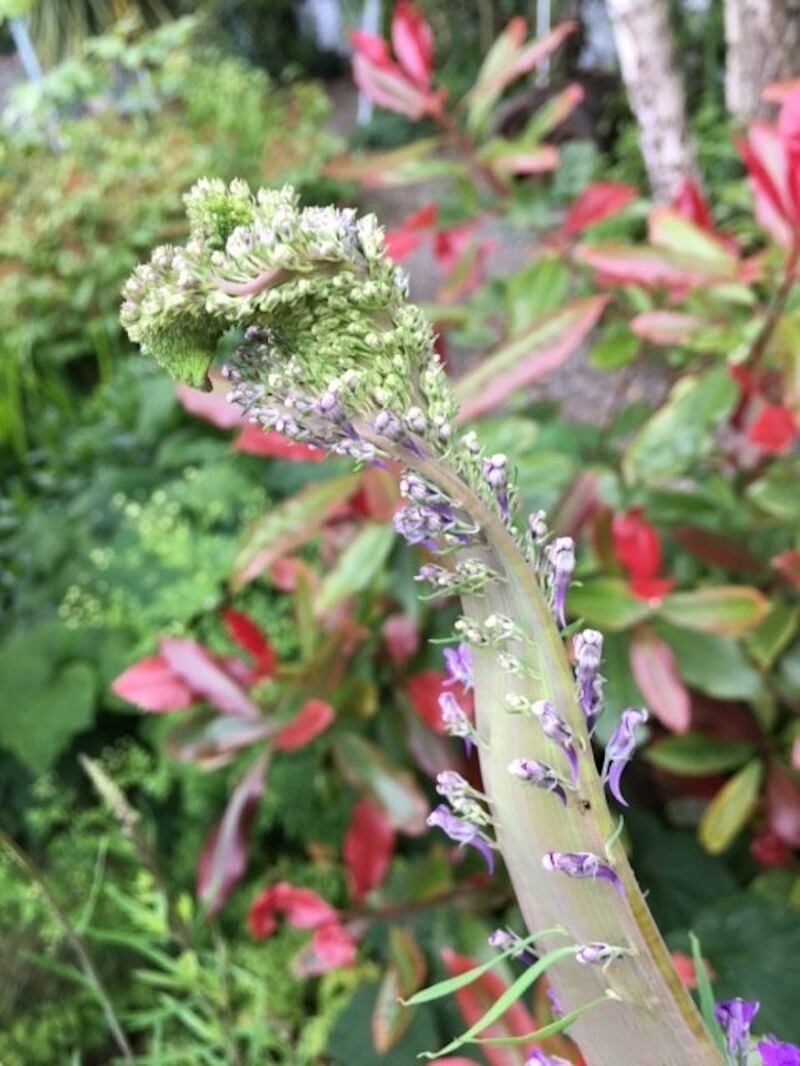Near allotments at Shankill I saw a dark-grey pigeon that had feathered feet.
Paddy Demery, Kilcoole, Co Wicklow
There are breeds of pigeon that have feathered feet (muffs) and they are prized by pigeon fanciers. Recently scientists have identified the gene that causes the phenomenon as a dominant wing gene that causes feathers to grow instead of scales on the feet. They also link the phenomenon to the evolution of dinosaurs to birds, when the latter retained some of the dinosaural scales.
Attached is a photo of a spectacular caterpillar that I have identified as that of the yellow-tail moth, which is supposed to be very rare in Ireland.
Anthony Manning, Tacumshane, Co Wexford

The yellow-tail is recorded in the Biodiversity Records as concentrated along the east coast area, with a couple of sightings in west Mayo.
This "wild" flower has developed a very different flat stem from the same root as a normal flower. There is no similar flat stem plant nearby that has contaminated it.
Mary O'Neill, Malahide, Co Dublin

It is a condition known as fasciation, where abnormal growth takes place in the growing point of the plant. This can be caused by several different conditions: hormonal imbalance, genetic mutation, bacterial or viral infection.
- Ethna Viney welcomes observations and photographs at Thallabawn, Louisburgh, Co Mayo, F28F978, or by email at viney@anu.ie. Please include a postal address












